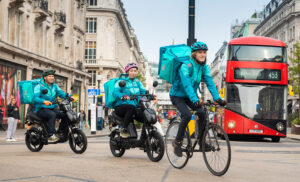In December 2023, we commissioned an independent study by Deloitte to assess how European cities regulate scooter sharing and how different regulatory models impact these cities and their residents.
The study of shared scooter regulations in European cities — how and why?
Since the launch of the first shared e-scooter services in the mid-2010s, cities have implemented various regulation models, ranging from unregulated open markets to tenders or bans.
The biggest challenge? Striking a balance between clear rules for shared scooter operations and ensuring operators have the freedom to design and deliver services that maximise micromobility benefits for cities.
Advertisement
To date, no empirical research has been done to understand the advantages and disadvantages of different regulatory models.
That’s why we commissioned Deloitte to conduct an independent, comprehensive review of the various shared scooter regulations in Europe and their respective impact on residents in terms of total trips, usage per vehicle, and costs for cities and users.
The study is based on 155 European cities and an exhaustive assessment of their regulatory frameworks. Below, you’ll see its main findings.
Flexible regulations provide the necessary control
The study identified the shared e-scooter regulatory models implemented across Europe. They’re grouped as follows:
- Light regulation: open markets and basic regulations with fees, including memorandums of understanding signed with cities;
- Medium regulation: authorisation schemes with specific requirements or fees;
- High regulation: public tenders.
The study identified that stricter regulation is often sought to establish better control of shared scooters, especially regarding safety and parking, but it found that light and medium regulatory models give cities sufficient control.
Advertisement
Table 1: Examples of cities with light and medium regulatory models:
| 🔎Vilnius, Lithuania. Open market. | 🔎Lisbon, Portugal. Medium regulations. | 🔎Düsseldorf, Germany. Medium regulations. |
| Vilnius introduced mandatory parking in central city areas and low-speed zones. Such basic measures have proven to be particularly efficient in improving parking quality in the city. | Lisbon sets clear requirements for scooter operators, including mandatory parking, minimum response time in case of poorly parked scooters, and technology implementation to educate users about correct parking. | Düsseldorf employs an authorisation system to manage and control the use of public space by operators. They regulate the fleet size of each operator, charge fees for public space use, and mandate parking spots in specific areas of the city. |
More restrictive regulation is expensive for users and cities
The study found that users pay roughly 19% more per ride in cities with high regulation than in cities with light regulation. Due to the higher cost, cities with high regulations have fewer shared scooter rides per resident.
This means cities with high regulations may inadvertently be stifling the growth of shared scooters and limiting their benefits.
There are financial consequences for cities, too.
The more regulated a market, the more financial resources a city needs to allocate to prepare and monitor shared e-scooter services while achieving the same level of control offered by less complex regulatory frameworks.
| The cost is the most for high regulation regimes, with cities spending up to 160 days per year managing tenders and monitoring compliance. The city of Oslo conducts a tender every year, costing roughly €500,000 each time. |
More restrictive regulation also provides less flexibility for local governments. They have less opportunity to change rules enhancing safety or scooter parking as their city’s needs change.
Light/medium regulations strike the right balance between control and shared scooter availability
Based on the study’s findings, Deloitte gives 5 recommendations for cities:
- Analyse different regulatory models. City officials should thoroughly analyse different models before implementing a regulatory scheme.
- Consider the cost of the regulation being considered. Officials should prioritise light or medium regulations due to their lower cost and greater flexibility.
- Consider the regulation’s flexibility. Light and medium regulatory models offer more flexibility as it’s possible to add safety and scooter parking rules.
- Consider the costs for residents. Lower vehicle availability leads to higher costs for residents. As hard fleet caps limit shared scooter availability and sustainability benefits, cities should consider implementing dynamic fleet caps based on performance metrics, such as average daily trips per vehicle and parking compliance.
- Ensure there are enough operators. A minimum of 4 shared e-scooter operators per city is recommended to ensure sufficient competition and innovation. This also reduces the risk of a monopoly in case of an operator ceasing operations or consolidation within the industry.
Unlocking the full potential of shared micromobility
Supportive regulation is important to expanding the benefits of shared scooters. However, we believe operators have a role to play in earning the trust of cities and users.
Advertisement
That’s why we’re continuously developing new measures to improve safety and mitigate any other negative impacts on urban environments.
- Safety. We’ve introduced features to guarantee road users’ safety, such as a cognitive reaction test to tackle drunk riding, the Tandem Riding Prevention System, and the Reckless Rider Score to educate and penalise reckless riders.
- Distance Based Pricing. By charging users based on trip distance (rather than time), we’re encouraging users to ride at safe speeds.
- Parking. Our AI parking verification system, ParkAssist+, helps users park scooters safely.
- We regularly share operational data with city partners to help them make data-driven infrastructure decisions.
Tap here to see the full study. For more about our safety measures and products, please contact us at [email protected]


















